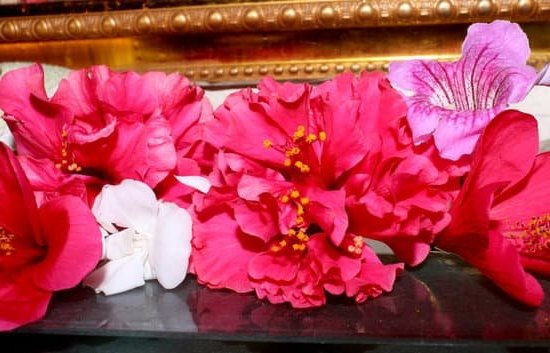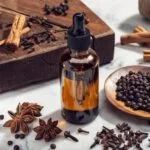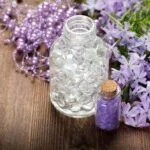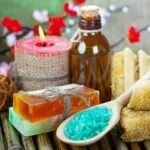Aromatherapy massage has become a popular form of alternative therapy in the wellness industry, combining the benefits of massage with the therapeutic properties of essential oils. Many people are curious about what does aromatherapy massage do to improve their physical and mental well-being. This article aims to delve into the concept, history, benefits, techniques, and precautions associated with aromatherapy massage to provide a comprehensive understanding for readers.
The practice of aromatherapy dates back centuries and has evolved into a widely accepted healing modality. Originating from ancient civilizations, aromatherapy involves the use of aromatic essential oils extracted from plants to promote relaxation, relieve stress, alleviate pain, and enhance overall health. Over time, aromatherapy has gained recognition for its holistic approach towards healing and its ability to complement conventional medical treatments.
One of the key benefits of aromatherapy massage is its ability to address both physical and mental health issues. By incorporating specific essential oils into a massage session, individuals can experience reduced stress levels, improved sleep quality, relief from muscle tension or pain, and enhanced relaxation. The unique combination of touch therapy and aromatherapy creates a synergistic effect that can promote overall well-being and vitality.
History of Aromatherapy
The history of aromatherapy dates back thousands of years, with its origins rooted in ancient civilizations such as Egypt, China, India, and Greece. These cultures recognized the therapeutic properties of essential oils derived from plants and used them for various medicinal purposes.
In ancient Egypt, aromatic substances were widely used in religious rituals, cosmetics, and embalming practices. The Ebers Papyrus, one of the oldest preserved medical documents dating to around 1550 BC, contains references to the use of essential oils for healing purposes.
Fast forward to the 20th century when a French chemist named René-Maurice Gattefossé coined the term “aromatherapy” after accidentally discovering the healing properties of lavender oil when applied to a burn on his hand. Gattefossé’s research paved the way for modern aromatherapy practices and sparked interest in utilizing essential oils for their medicinal benefits.
Aromatherapy gained popularity in Europe during the early 1900s and gradually spread to other parts of the world as people began recognizing its holistic approach to health and well-being.
Today, aromatherapy has evolved into a mainstream alternative healing practice that is widely incorporated into massage therapy sessions, spa treatments, skincare products, and holistic medicine. The soothing scents and therapeutic properties of essential oils used in aromatherapy massage play a crucial role in enhancing the overall relaxation and wellness benefits of massage therapy.
By combining the healing touch of massage with the aromatic essence of essential oils, aromatherapy massage offers a holistic approach to treating various physical and mental health conditions.
Benefits of Aromatherapy Massage
Aromatherapy massage is a holistic healing treatment that combines essential oils with massage therapy to promote relaxation and overall well-being. This therapeutic practice has gained immense popularity in the wellness industry due to its numerous physical and mental health benefits. So, what does aromatherapy massage do exactly?
One of the primary benefits of aromatherapy massage is stress relief. The soothing scents of essential oils combined with the gentle touch of massage can help reduce anxiety levels, calm the mind, and improve mood.
In addition to stress relief, aromatherapy massage also offers effective pain management benefits. Essential oils like lavender, peppermint, and eucalyptus have anti-inflammatory and analgesic properties that can help alleviate muscle tension, joint pain, headaches, and other discomforts. The combination of these essential oils with massage techniques can target specific areas of pain and promote natural healing within the body.
Furthermore, aromatherapy massage is known to improve sleep quality for many individuals struggling with insomnia or sleep disturbances. Essential oils like chamomile, bergamot, and ylang-ylang are commonly used in aromatherapy for their calming and sedative effects, which can help induce relaxation and prepare the body for restful sleep. By incorporating these oils into a massage session, individuals may experience better sleep patterns and enhanced overall quality of life.
| Physical Benefits | Mental Benefits |
|---|---|
| Relieves muscle tension | Reduces anxiety levels |
| Alleviates joint pain | Improves mood |
| Reduces headaches | Promotes relaxation |
Essential Oils Used in Aromatherapy Massage
Essential oils play a vital role in aromatherapy massage, as they carry numerous therapeutic properties that can enhance the overall experience and benefits of the massage. These concentrated plant extracts are known for their aromatic and healing properties, offering a natural way to promote relaxation, relieve stress, and improve overall well-being. Some of the most commonly used essential oils in aromatherapy massage include lavender, peppermint, eucalyptus, chamomile, and tea tree oil.
Lavender
Lavender essential oil is one of the most popular choices in aromatherapy massage due to its calming and relaxing properties. It is known to help reduce anxiety, promote better sleep quality, and ease muscle tension. The soothing scent of lavender can create a peaceful ambiance during the massage session, aiding in stress relief and mental relaxation.
Peppermint
Peppermint essential oil is often used in aromatherapy massage for its invigorating and cooling effects. It can help alleviate headaches, muscle soreness, and digestive issues. The refreshing aroma of peppermint can also increase alertness and mental clarity during the massage, creating a revitalizing experience for the recipient.
Eucalyptus
Eucalyptus essential oil is commonly utilized in aromatherapy massage for its respiratory benefits. It has a refreshing scent that can help clear sinuses, improve breathing, and provide relief from congestion. Eucalyptus oil also possesses antibacterial properties that can promote healing and boost immunity. During an aromatherapy massage session with eucalyptus oil, clients may experience improved respiratory function and enhanced relaxation.
Overall, the selection of essential oils used in aromatherapy massage is crucial to tailor the treatment to each individual’s specific needs and preferences. By understanding the unique properties of different essential oils like lavender, peppermint, and eucalyptus, clients can receive a customized therapeutic experience that addresses their physical and emotional well-being effectively.
Aromatherapy Massage Techniques
Swedish Massage
Swedish massage is a popular technique used in aromatherapy massage that involves long, flowing strokes to promote relaxation and relieve muscle tension. The therapist uses a combination of kneading, tapping, and circular movements to help improve blood circulation and lymphatic drainage. When combined with essential oils tailored to the client’s needs, Swedish massage can enhance the benefits of the aromatherapy experience by promoting a sense of well-being and calm.
Lymphatic Drainage
Lymphatic drainage is another technique commonly incorporated into aromatherapy massages to support the body’s natural detoxification process. This gentle massage technique focuses on stimulating the lymph nodes and encouraging the flow of lymph fluid throughout the body.
By using light pressure and rhythmic movements, lymphatic drainage massage can help reduce swelling, boost immunity, and promote overall wellness. When paired with suitable essential oils known for their cleansing properties, such as grapefruit or juniper berry, this technique can further enhance the therapeutic effects of aromatherapy.
Acupressure Points
In addition to Swedish massage and lymphatic drainage, aromatherapy massages may also involve targeting specific acupressure points on the body to address various physical and emotional concerns. By applying precise pressure to these points along energy meridians, therapists can help alleviate pain, reduce stress, and restore balance within the body.
Combining acupressure techniques with aromatherapy allows for a holistic approach to healing that addresses both the physical and mental aspects of well-being. When clients receive an aromatherapy massage that includes acupressure point work with essential oils like lavender or peppermint known for their calming properties, they may experience increased relaxation and a greater sense of harmony within themselves.
By incorporating a variety of massage techniques tailored to individual needs and preferences along with carefully selected essential oils, aromatherapy massages offer a holistic approach to health and wellness that promotes relaxation, stress relief, pain management, improved sleep quality, and overall well-being.
What to Expect During an Aromatherapy Massage Session
During an aromatherapy massage session, it is crucial to understand the standard process involved to fully benefit from this holistic experience. Here is what you can expect during an aromatherapy massage session:
- Consultation: Your therapist will start by conducting a consultation to gather information about your health history, any specific concerns or conditions you may have, and your preferences for essential oils. This step is essential to tailor the aromatherapy massage session to your individual needs.
- Selection of Essential Oils: Based on your consultation, the therapist will select specific essential oils that align with your needs and preferences. Different essential oils offer various benefits, such as calming lavender for relaxation, invigorating peppermint for energy boost, or soothing chamomile for stress relief.
- Massage Session: The actual aromatherapy massage will begin once the essential oils are chosen. The therapist will use a combination of gentle strokes and kneading techniques to help release tension in your muscles, improve circulation, and promote overall well-being. The aroma of the essential oils will enhance the sensory experience and amplify the therapeutic effects of the massage.
- Post-Massage Care: After the massage session is complete, your therapist may provide recommendations for post-massage care, such as drinking plenty of water to stay hydrated, resting to allow your body to continue benefiting from the treatment, and tips for prolonging the effects of the aromatherapy massage at home.
Experiencing an aromatherapy massage session involves a holistic approach that aims to not only address physical tension but also mental and emotional well-being through the use of essential oils and therapeutic touch. By following these steps during a typical session, individuals can immerse themselves in this rejuvenating practice that offers a myriad of benefits for overall health and wellness.
Precautions and Contraindications
Aromatherapy massage is a holistic healing practice that combines the benefits of essential oils with therapeutic massage techniques. While it offers numerous physical and mental health benefits, it is important to be aware of potential risks and contraindications associated with this treatment. Understanding these precautions can help individuals make informed decisions about whether aromatherapy massage is suitable for them.
Below are some potential risks and contraindications to consider before undergoing an aromatherapy massage session:
- Allergies: Some individuals may have allergies to certain essential oils used in aromatherapy. It is crucial to inform your massage therapist about any known allergies or sensitivities before the session.
- Skin Sensitivities: Essential oils are highly concentrated substances that can cause skin irritation in some individuals. It is recommended to do a patch test before using any new essential oil on the skin during an aromatherapy massage.
- Pregnancy: Pregnant women should consult with their healthcare provider before receiving an aromatherapy massage, as some essential oils may not be safe during pregnancy.
Being mindful of these precautions can help prevent adverse reactions and ensure a safe and beneficial experience during an aromatherapy massage session. If you have any underlying health conditions or concerns, it is always best to consult with a healthcare professional before trying out this form of alternative therapy.
Remember that while aromatherapy massage can offer relaxation, stress relief, and other health benefits, it is important to prioritize your well-being by taking necessary precautions and being informed about the potential risks involved. By doing so, you can fully enjoy the rejuvenating effects of aromatherapy without compromising your health and safety.
DIY Aromatherapy Massage at Home
In conclusion, aromatherapy massage offers a holistic approach to wellness by combining the therapeutic benefits of massage with the healing properties of essential oils. The practice has a rich history that dates back centuries and continues to gain popularity in the modern wellness industry. Aromatherapy massage can provide a wide range of physical and mental health benefits, including stress relief, pain management, and improved sleep quality.
By using a variety of essential oils with unique properties, aromatherapy massage allows for personalized and targeted treatments to address specific concerns. Techniques such as Swedish massage and lymphatic drainage are commonly used to enhance the overall experience and effectiveness of the treatment. During a session, individuals can expect a calming and rejuvenating experience from start to finish, helping them relax both body and mind.
It is important for individuals to be aware of any potential risks or contraindications associated with aromatherapy massage, such as allergies or skin sensitivities. However, with proper precautions and guidance from trained professionals, many people can safely enjoy the benefits of aromatherapy massage either at a spa or in the comfort of their own home.
By following recommended guidelines and selecting suitable essential oils, individuals can create their own relaxing atmosphere for self-care and well-being through DIY aromatherapy massage practices.
Frequently Asked Questions
What Are the Benefits of Aromatherapy Massage?
Aromatherapy massage offers numerous benefits such as relaxation, stress relief, improved mood, increased circulation, pain relief, and enhanced skin health. The use of essential oils enhances the therapeutic effects of the massage.
What Happens in a Full Body Aromatherapy Massage?
During a full body aromatherapy massage, the therapist will use a combination of gentle Swedish massage techniques and the application of essential oils. The client will experience deep relaxation as the soothing scents work to calm both the mind and body.
What Is the Difference Between a Normal Massage and an Aromatherapy Massage?
The main difference between a normal massage and an aromatherapy massage lies in the use of essential oils. While a regular massage focuses on manipulating muscles and tissues for physical benefits, aromatherapy massages also incorporate the healing properties of essential oils to target emotional well-being and overall health.
The added scent component can have a profound effect on one’s mood and relaxation levels during the session.

Are you looking for a natural way to improve your health and wellbeing?
If so, aromatherapy may be the answer for you.





